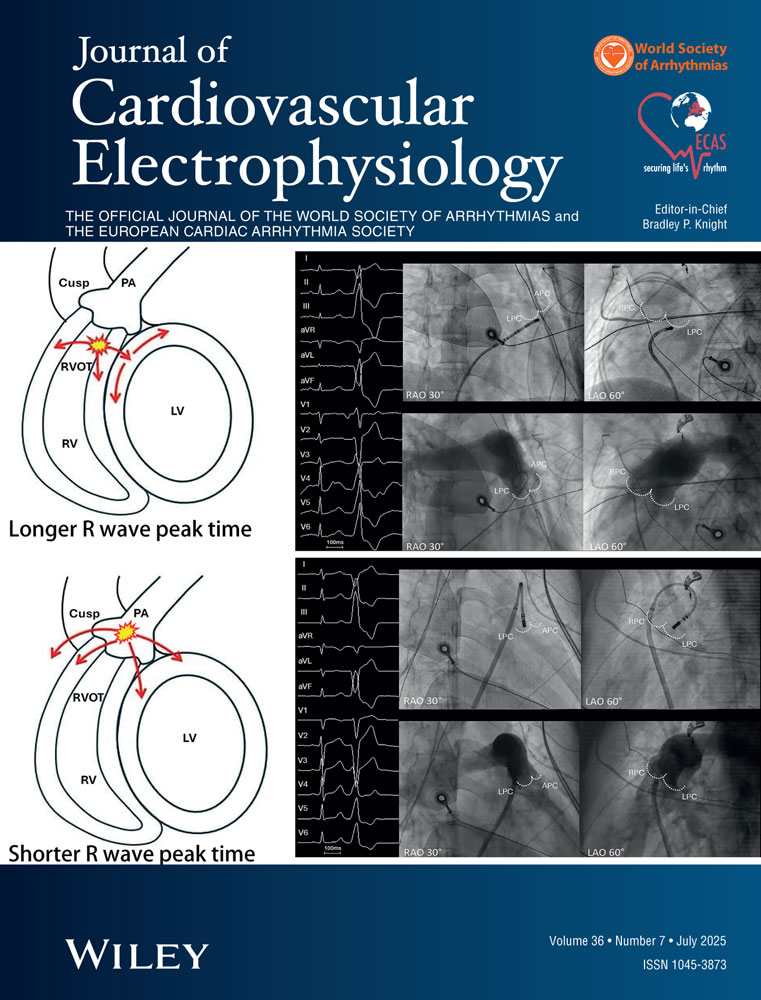How to Diagnose, Locate, and Ablate Coronary Cusp Ventricular Tachycardia
Abstract
Catheter Ablation of LVOT VT from a Coronary Cusp. Introduction: Although radiofrequency energy usually is applied to the most favorable endocardial site in patients with outflow tract ventricular tachycardia, there are still some patients in whom the tachycardia can be ablated only from an epicardial site. We established the characteristics and technique of catheter ablation from both the left and right coronary cusps to cure left ventricular outflow tract ventricular tachycardia.
Methods and Results: We studied 15 patients in whom VT was thought to originate from the coronary cusp by both activation and pace mapping after precise mapping of the right ventricle, left ventricle, pulmonary artery, coronary cusps, and anterior interventricular vein. Twelve-lead ECG analysis revealed an S wave on lead I, tall R wave on leads II, III, and aVF, and no S wave on either lead V5 or V6. Precordial R wave transition occurred on leads V1 and V2. The earliest ventricular electrogram at a successful ablation site was recorded 35 ± 12 msec before QRS onset and 19 ± 15 msec earlier than the earliest ventricular electrogram recorded from the anterior interventricular vein. Almost identical pace mappings were obtained from the coronary cusp. Catheter tip temperature was maintained at 55°C during energy delivery, and the distance from the tip to the ostium of each left and right coronary artery was > 1.0 cm by coronary angiography.
Conclusion: Left ventricular outflow tract VT that could not be ablated from an endocardial site could be safely eliminated by radiofrequency application to the left and right coronary cusps.




